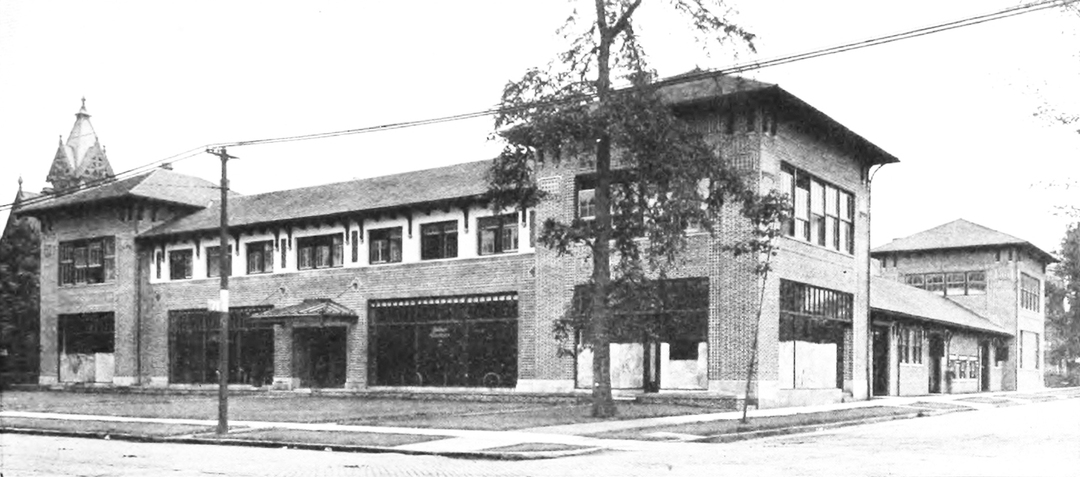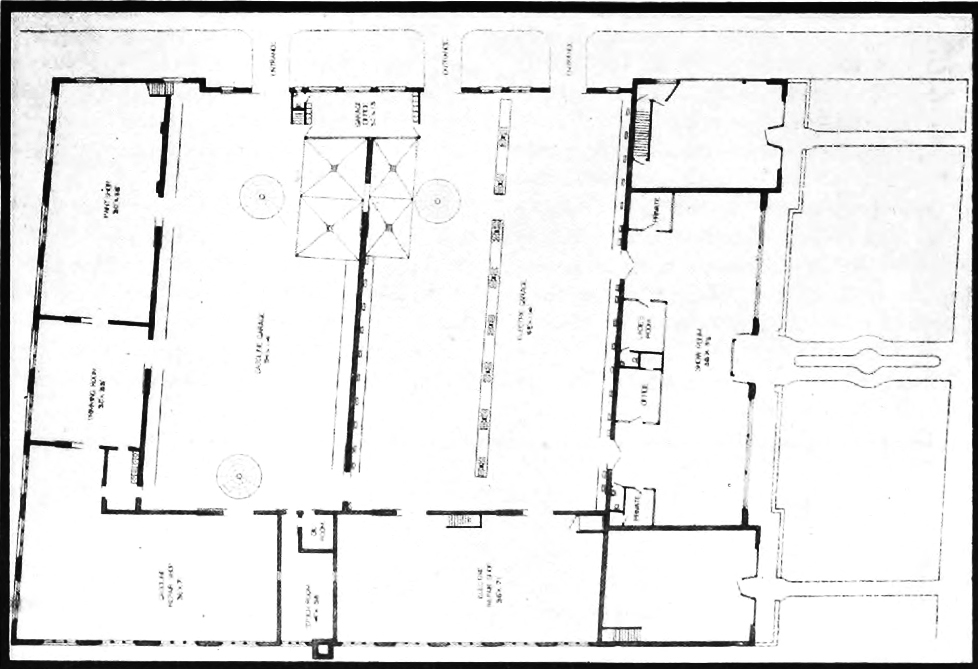
In the Great Depression, used-car lots began to replace the sweeping front lawns of some of the deteriorating mansions that were once the pride of Cleveland's famed Millionaires' Row. By the 1950s, Euclid Avenue was a veritable "Motorists' Row" with as many car lots, filling stations, garages, and motels as mansions. Yet, long before this turn, the "Showplace of America," as Baedeker's Travel Guide had recently dubbed Euclid Avenue, was a fitting place for a showroom for innovative—and expensive—new cars made in Cleveland.
More than a century before Elon Musk's Tesla Roadster was launched into space, the first crude electric carriage was produced by the Scottish inventor Robert Anderson in 1832. In 1891, William Morrison built the first successful electric automobile in the United States. Tesla's electric cars are a luxury item by today's standards, but electric cars have always been items of wealth. The Baker Motor Vehicle Company was founded in 1898 by the engineer Walter Baker to produce electric automobiles. Prior to this, Walter Baker helped found the American Ball Bearing Co. in 1895, which began to develop and produce automobile parts.
The vehicles at this time were extremely heavy and operated on large batteries that were very expensive. Baker built an electric automobile for his private use but wished to create a lighter machine with a smaller battery for mass consumption. The battery Baker invented used twelve cells, whereas other batteries during that time contained forty to forty-eight cells. By 1905, the success of Baker's lighter, simpler, and lower-maintenance electric automobile had created a demand for other styles including runabouts, stanhopes, four-passenger surreys, depot carriages, and broughams.
The Baker Motor Vehicle Company continued to adopt advanced technology for its vehicles. In 1909 the company implemented the bevel gear shaft drive as a more efficient transmission over the chain drive. The bevel gear shaft was both light and strong, suitable for small vehicles. The batteries used by the Baker Motor Vehicle Company were praised by their creator Thomas Edison. On July 29th, 1907 a Baker Electric car was driven for 106.8 miles on one charge on a standard lead battery. The record-setting car was shown in the sales room of the Baker Electric Motor Car Building.
The Baker Electric Motor Car Building was built in 1910. The Arts & Crafts-styled brick building served as Baker's first car showroom. It was designed by the prominent Cleveland architect Frank B. Meade and decorated by Rohrheimer-Brooks. Because only the wealthy could afford automobiles at the time, the showroom was built on Millionaires' Row at Euclid Avenue and East 71st Street (7100 Euclid Avenue). The Baker garages were well-regarded for their electric car services, and the building became a national model for automobile dealerships.
In 1912, Baker invented a new transmission, which proved to be the greatest revolution in the auto industry since the automobile itself. The new electric transmission was powered by a gasoline motor and eliminated many of the complicated processes in running automobiles such as the gear-driven transmission, clutch, flywheel, heavy self-starter, and the generator to charge the battery. Baker drove a car with this new transmission daily.
Of the three different models displayed in the Baker Electric Motor Car Building showroom in 1913, the most affordable model was the two-passenger Victoria model, which cost $2,000. The four-passenger coupe cost $2,800. The five-passenger brougham's cost came to $3,100. Adjusted for inflation, these vehicles would cost between $100,00 to $200,000 today.
In 1915 another Cleveland automaker, Rauch & Lange Carriage Company, merged with the Baker Motor Vehicle Company to form Baker Rauch & Lange Co. By 1915, the light Baker electric coupe launched into increased production. In doing so, they were able to lower the price of the both the couple, the double drive brougham, and the roadster. By the 1920s, Baker R. & L. Co. sold its electric car division to focus on industrial vehicles and equipment. The Otis Elevator Company bought Baker in 1954, and Otis merged with United Technologies in 1975. The latter company sold the Baker Division to German multinational company Linde-Akiengesellschaft in 1977. Baker Materials Handling, the Baker division under Linde-AG, became Linde Lift Truck Corporation in 1999.
Though the company itself has long ceased to exist, the Baker Electric Motor Car Building still stands on Euclid Avenue today. The building has been occupied over the years by a grinding and finishing shop and various printing companies, and the large picture windows were filled in by bricks to better accommodate the changing needs of the occupants. Ivy covered the building, concealing the aesthetic details of the architecture, when Cumberland Development LLC and Aril Ventures partnered together the buy the building in 2006. The Baker Electric Motor Car Building underwent a $7.1 million restoration project to convert the building into bio-tech labs and medical business offices to take advantage of its location on the newly christened "Health-Tech Corridor" near the Cleveland Clinic. Meade's Early Commercial/Mission Revival mixed-style Baker building was added to the National Register of Historic Places in 2007, which enabled historic tax credits for the restoration project.
Dick Pace, the real estate developer from Shaker Heights, led the project. Interestingly, Pace is an architect and former partner of Van Dijk Pace Westlake Architects of Cleveland, which was founded by Abram Garfield in 1905. Garfield had often partnered with Baker Electric Building designer Frank Meade on other projects.
The 50,000-square-foot Baker Electric Building's restoration revealed much of the original showroom. The large windows were recovered. Oak panel walls and showroom lamps were uncovered from drywall and drop ceilings. The showroom's original ceramic tile floor lay underneath asphalt floor tiles and concrete. The original, century-old ceramic tiles were laid out in a checked pattern with an intricate border design.
The building had room for a dozen tenants, and Pace was getting interest from international companies. In the hopes of being granted a Leadership in Energy and Environmental Design Silver Certificate, or LEED, the renovation implemented green and sustainable practices. There is an electric charging station on the outside of the building and energy companies occupy the building in search of new environmentally safe ways to harness energy. The Baker Electric building is a site of sustainable innovation which has promoted neighborhood growth along Euclid Avenue.
Images









